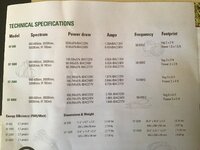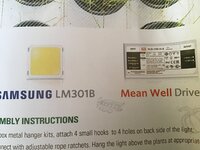Hi BooWho2,
Obviously I’m not Amy but I’m hoping she won’t mind a quick jump in to get you sorted. First the pulley should be hooked nearest to the light not nearest to the tent pole.
In top pic one end with carabiner clip is mounted high up, this pulley end is nearest the fixture for easy adjustment without ladder
Most pulleys will not fit directly onto the tent poles, so you can use the cord to loop over the tent pole and connect to its own carabiner clip.
The last shows one version of metallic plumbers strap, there are other kinds of plumbing straps too but this one has many uses. Comes in a roll and you cut to desired lengths.
Back to Amy’s Garden of Eden in 3, 2, 1..... roll em
Thank you 013! That was exactly what I was looking for. Very nice.



 Thanks thirteen!
Thanks thirteen!













 that I barely have the energy to post properly about, let me try tho’.
that I barely have the energy to post properly about, let me try tho’. It looks like the first set of leaves dug in there while they were all still squished together.
It looks like the first set of leaves dug in there while they were all still squished together.



 I’m off to make coffee
I’m off to make coffee 